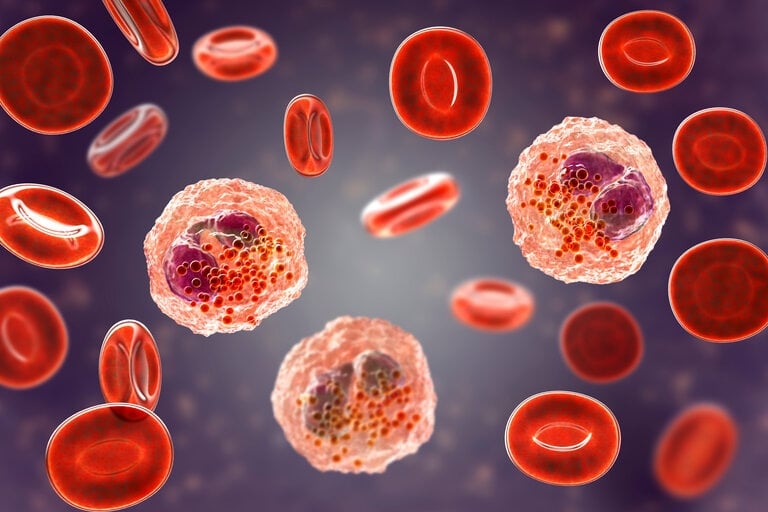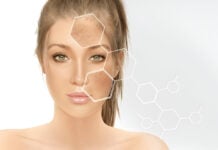From the field of medicine to electronics and even energy, revolution has taken place almost everywhere with the application of nanotechnology. More recently, the beauty and skincare world has embraced nanotechnology to improve cosmetic formulations in terms of activity. Nano-sized active ingredients have the potential to penetrate deeper into the skin and deliver targeted effects through more accurate targeting, thus making nanotechnology a game changer in skincare. This article examines nanotechnology and its benefit to skincare, looks at concerns regarding it, and evaluates the future of nano-formulated cosmetics.
Understanding Nanotechnology in Skincare
Nanotechnology manipulates materials on nanoscale size, usually smaller than 100 nanometers (nm) (Sahoo et al., 2021). In skincare applications, nanotechnology enables the activity encapsulation of the active ingredient in nano-sized carriers such as liposomes, nanoemulsions, solid lipid nanoparticles, and polymeric nanoparticles. Such nanosystems improve the stability, solubility, and bioavailability of the active ingredient, assuring much deeper skin penetration and long-lasting effects (Patravale & Mandawgade, 2008).
Nano-Sized Active Ingredients and Their Benefits
1. Enhanced Penetration and Bioavailability: One thing that benefits nanotechnology in skincare is better penetration of active ingredients than regular ones. In traditional formulations, active ingredients fail to penetrate properly because of the epidermal barrier. Nano-sized particles can overcome this barrier and deliver active compounds to the dermis, enhancing bioavailability and efficacy (Baroli, 2010).
2. Targeted Delivery: This targeted delivery to skin layers or cells is at the core of the usage of nanotechnology, which would naturally enhance the efficacy of treatment for skin disorders, such as hyperpigmentation, acne, and aging. For example, retinol that is nano-encapsulated can penetrate the dermis better and thus diminishes irritation caused by it, while maximizing its anti-aging effect (Krishnaiah et al., 2020).
3. Improved Stability of Active Ingredients: Light, oxygen, and temperature variation have been cited to influence the degrading properties of many skincare ingredients, vitamins, peptides, and antioxidants. Nanotechnology protects these ingredients in nanocarriers, thereby improving their stability and extending their shelf-life while maintaining potency (Prow et al., 2011).
4. Controlled Release for Prolonged Effects: Nanoformulated cosmetic formulations are designed to provide controlled or sustained release of active principles so that therapeutic effects may be maximized over a longer duration. To that effect, slow release minimizes the frequency of application and attendant side effects, such as irritation and redness (Uchegbu & Schatzlein, 2014).
Common Nano-Formulations in Skincare
- Liposomes: These spherical vesicles are phospholipid bilayers that enclose both hydrophilic and lipophilic materials. It promotes moisture in the skin and penetration of vitamins, antioxidants, and anti-aging products (Verma et al., 2003).
- Nanoemulsions: These are either oil-in-water or water-in-oil emulsions with nano-sized droplets, which magnify the solubility or bioavailability of such types of materials as essential oils, UV filters, etc. (Solans & Solé, 2012).
- Solid Lipid Nanoparticles (SLNs): These are lipid-aligned nanoparticles designed for a controlled release of active agents for enhancing hydration and protection of skin (Müller et al., 2002).
- Polymeric Nanoparticles: Developed for peptides and Growth factor specific delivery to skin layers, the biodegradable nanoparticles provide new options for improving regenerative skincare solutions (Baspinar et al., 2012).
Safety Concerns and Regulatory Aspects
The concerns related to nanotechnology in skin care with the many promised advantages are possibilities of having nano-sized particle assaults. Minor part of the “nanoresearchers” believes that, rather than skin absorption, nanoparticle material could possibly invade and accumulate inside the body, resulting in cytotoxic effects (Monteiro-Riviere et al., 2011). However, the majority studies and debates support the opinion that these nanoparticles used in the formulation of cosmetics do not penetrate beyond the outermost skin layers and miniscule amounts were absorbed systemically (Nohynek et al., 2008) .
Certain regulatory bodies like the U.S. Food and Drug Administration (FDA) and the European Commission have been enlisted with guideline measures concerning the safe applications of nanotechnology in cosmetics. Part of these rules includes not only the compulsory animal testing of safety of nanoparticles but also the mandatory listing of such nanoparticles on product labels (European Commission, 2011).
The Future of Nanotechnology in Skincare
Nanotechnology offers great hope for the future of skin care, as research currently focuses on constructing increasingly sophisticated nano-delivery systems. Novel approaches such as smart nanoparticles, intelligent carriers which react to environmental stimuli like pH and temperature, are being investigated for future personalized skin care solutions (Zhang et al., 2020). New biocompatible and biodegradable nanocarriers continue to further improve the safety and sustainability of nanoformulated products.
Conclusion
Nanotechnology has revolutionized the face of skincare because it has made it possible to improve the penetration, stability, and specific delivery of active ingredients. With the advent of nano-sized carriers like liposomes, nanoemulsions, and solid lipid nanoparticles, skin care formulations have been more effective than ever. While safety measures have certain limitations, the regulations are also available for consumer protection. Therefore, the high stretch of faster research in nanotechnology will increasingly explore personalized and sustainable skin care solutions.
References
- Baroli, B. (2010). Penetration of nanoparticles and nanomaterials in the skin: Fiction or reality? Journal of Pharmaceutical Sciences, 99(1), 21-50. https://doi.org/10.1002/jps.21817
- Baspinar, Y., Borchert, H. H., & Wohlrab, J. (2012). Nanoparticles as drug carriers for dermal applications. Journal of Biomedical Nanotechnology, 8(1), 1-10. https://doi.org/10.1166/jbn.2012.1307
- European Commission. (2011). Commission recommendation of 18 October 2011 on the definition of nanomaterial. Official Journal of the European Union, 275(38), 38-40. https://doi.org/10.3000/17252555.L_2011.275.eng
- Krishnaiah, Y. S. R., Sahithi, B. R., Bhaskar, P., & Satyanarayana, V. (2020). Trends in nanotechnology-based delivery systems for cosmetic applications. Current Drug Delivery, 17(7), 550-567. https://doi.org/10.2174/1567201817999200710192023
- Monteiro-Riviere, N. A., Samberg, M. E., Oldenburg, S. J., & Riviere, J. E. (2011). Nanoparticles and their interaction with the dermal barrier. Dermatologic Therapy, 24(4), 544-554. https://doi.org/10.1111/j.1529-8019.2011.01448.x
- Zhang, L., Pornpattananangkul, D., Hu, C. M., & Huang, C. M. (2020). Development of nanoparticles for antimicrobial drug delivery. Current Medicinal Chemistry, 17(6), 585-594. https://doi.org/10.2174/092986710790416290












